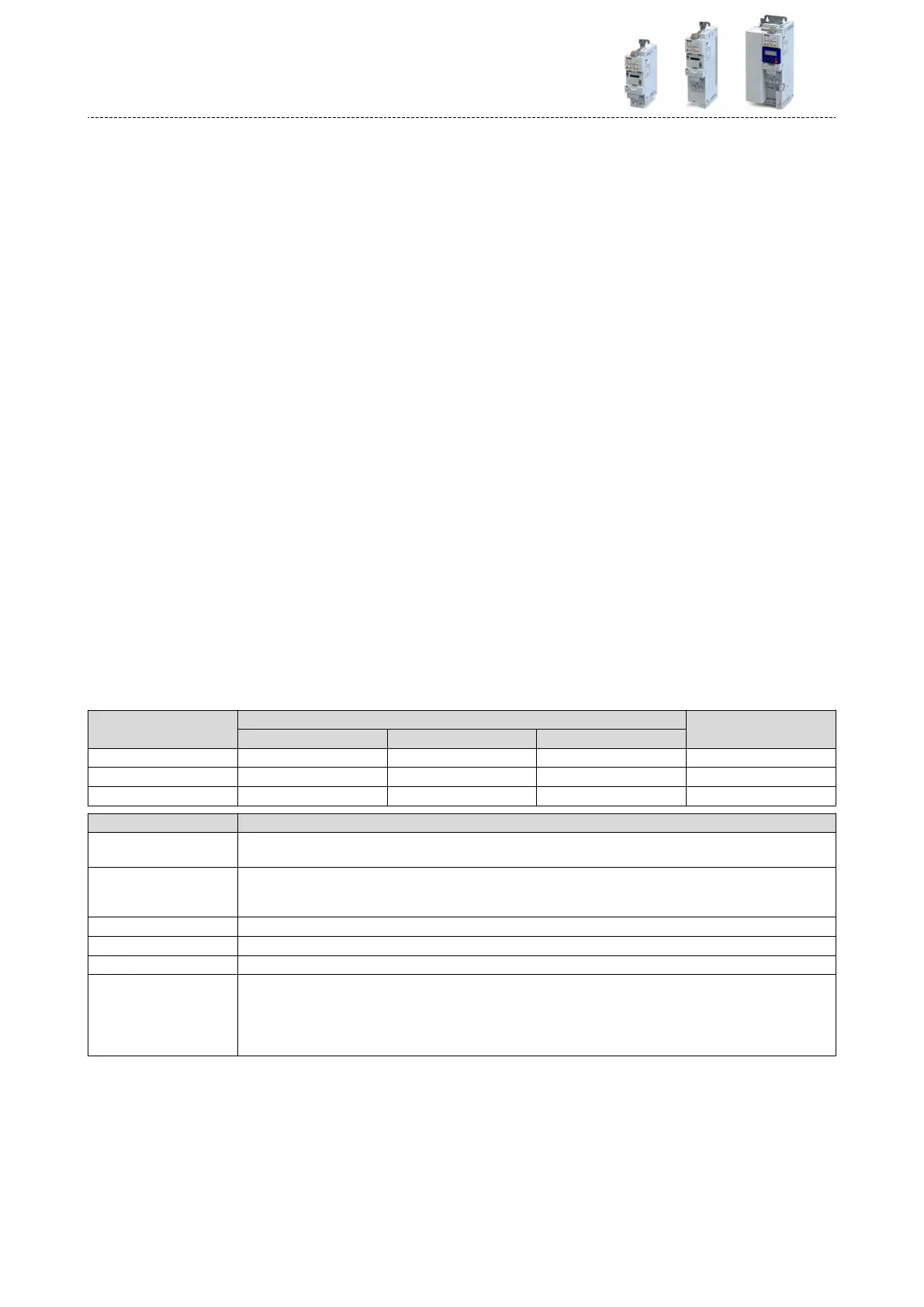9.4.8 Process data objects
Process data objects (PDOs) are used for the cyclic transmission of (process) data via CAN-
open. PDOs only contain data and an idener. They do not contain any informaon about
the sender or receiver and are therefore very ecient.
Details
•
Process data objects which the inverter receives via the network are referred to as
"Receive PDOs" (RPDOs).
•
Process data objects which the inverter sends via the network are referred to as "Transmit
PDOs" (TPDOs).
•
The maximum length of a PDO is 8 bytes (4 data words).
•
Each PDO requires a unique idener ("COB-ID") for the purpose of idencaon within
the network.
•
Communicaon parameters such as the transmission type and cycle me for each PDO
can be set freely and independently of the sengs of other PDOs
Transmission type
Process data objects can be transmied in an event-controlled or me-controlled manner. The
below table shows that it is possible to combine the dierent methods by means of logic
operaons (AND, OR):
•
Event-controlled: The PDO is sent if a special device-internal event has occurred, for
instance, if the data contents of the TPDO have changed or if a transmission cycle me has
elapsed.
•
Synchronous transmission: Transmission of a TPDOs or recepon of an RPDO is eected
aer the inverter has received a sync telegram (COB-ID 0x80).
•
Cyclic transmission: The cyclic transmission of PDOs is eected when the transmission
cycle me has elapsed.
•
Polled via RTR: Transmission of a TPDO is carried out on request by another device via data
request frame (RTR remote transmit request). For this, the data requester (e.g. master)
sends the data request frame with the COB-ID of the TPDO that is to be requested to
transmit. The receiver recognises the RTR and carries out the transmission.
Transmission type PDO transmission Logic combinaon of dier-
ent transmission types
cyclic synchronous event-controlled
0
l l
AND
1 ... 240
l
-
254, 255
l
l
OR
Transmission type Descripon
0 Synchronous and acyclic
•
The PDO is transmied on an event-controlled basis with every sync (e.g. when a bit change occurs in the PDO).
1 ... 240 Synchronous and cyclic (sync-controlled with a response)
•
Selecon n = 1: The PDO is transmied with every sync.
•
Selecon 1 < n ≤ 240: The PDO is transmied with every n-th sync.
241 ... 251 Reserved
252 Synchronous - RTR only
253 Asynchronous - RTR only
254, 255 Asynchronous - manufacturer-specic / device prole-specic
•
If one of these values is entered, the PDO is transferred in an event-controlled or cyclic manner. (The values "254"
and "255" are equivalent).
•
For a cyclic transmission, a cycle me must be entered for the respecve PDO. In this case, cyclic transmission
takes place in addion to event-controlled transmission.
Conguring the network
CANopen
Process data objects
266

